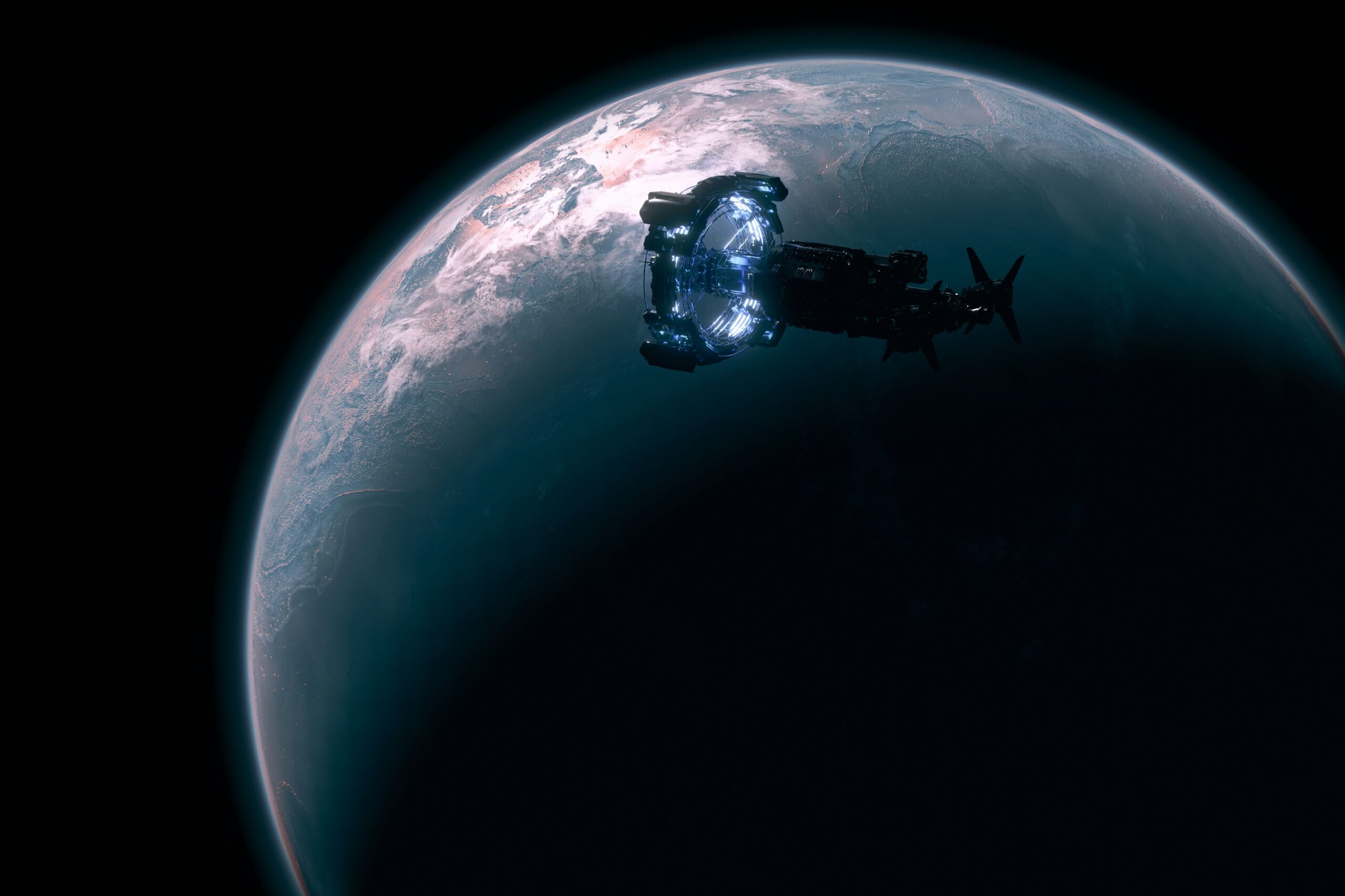Table of Contents
Introduction
Since the dawn of human civilization, we have looked up at the night sky and wondered what lies beyond. That curiosity has carried us from stone tools to rockets, and now, to the brink of becoming a species that might one day live across multiple worlds. But the path to a multiplanetary future is not only a matter of rockets and astronauts—it’s about energy, ethics, and imagination.
This article sets the stage for one of humanity’s boldest ambitions: becoming a civilization that thrives beyond Earth. We’ll explore why this goal matters, what technological steps are required, and the challenges, both practical and moral, that stand in the way. Think of this as the central map in the series Becoming a Multiplanetary Species: A Scientific Exploration. Each major theme introduced here—fusion energy, extraterrestrial resources, advanced propulsion, terraforming, and ethics—will be expanded in future articles. These articles will branch outward, forming a structured exploration of what it truly takes to become a multiplanetary species.
Why a Multiplanetary Civilization?
At first glance, the idea might seem like science fiction. But ask yourself: why stop at Earth? Our planet, for all its beauty, is fragile. A single asteroid, nuclear war, or ecological collapse could jeopardize the future of everything we’ve built. Spreading across multiple worlds is, in many ways, an insurance policy for our species.
Yet it’s more than survival. Becoming multiplanetary is also about curiosity, creativity, and the urge to expand horizons. Just as our ancestors once crossed oceans without knowing what lay on the other side, we now look to Mars, Europa, and exoplanets with the same mix of fear and fascination.
And there’s another motivation: progress. Historically, exploration has driven leaps in science and technology. Colonizing other planets could do the same, forcing us to solve problems in energy production, resource management, and artificial habitats—innovations that will also benefit life on Earth.
Read the first post in the series:The Economics of Space Mining: How Lunar and Asteroid Resources Will Power a Multiplanetary Civilization
The Energy Question
Energy is at the heart of everything. If humanity is to spread across space, we need power sources that go far beyond fossil fuels. Building and sustaining colonies requires not just rockets, but also habitats, food production, water recycling, and heating.
On Earth, our immediate future likely depends on renewables like solar and wind. But for a multiplanetary society, those aren’t enough. We need breakthroughs.
- Nuclear Fusion: The holy grail of energy. If we can replicate the Sun’s power here on Earth, we gain access to nearly limitless clean energy. Fusion would not only fuel our cities but also our spacecraft, potentially powering journeys to the outer planets in weeks instead of decades.
- Antimatter Engines: Still largely theoretical, antimatter promises extreme energy density. Just a gram could power a spacecraft across the Solar System. The problem, of course, is that antimatter is incredibly expensive and difficult to produce.
- Dyson Spheres and Mega-Structures: Long-term, thinkers like Freeman Dyson have imagined structures that capture a star’s full energy output. While building such a megastructure is far beyond us today, it serves as a reminder of the scale of ambition required for a civilization to truly expand into space.
Energy is not just fuel—it is the foundation upon which every other step depends.
Next in the series: “Helium-3 and Fusion Power: The Energy Source of a Multiplanetary Civilization”
Propulsion Systems: How Do We Get There?
Even with the best rockets today, space is slow. To put things in perspective, it takes around seven months to get to Mars with current technology. To reach Neptune? Over a decade. To even dream of going to another star? Tens of thousands of years.
That’s why propulsion innovation is key.
- Nuclear Thermal Rockets: These engines use nuclear reactions to heat propellant, offering more efficiency than chemical rockets. NASA and others are actively researching them, and they may shorten travel times to Mars.
- Ion Drives: Already used in missions like Dawn, ion propulsion offers continuous, efficient thrust. The downside is that it’s weak—but over time, it can build up remarkable speeds.
- Speculative Drives: Concepts like Alcubierre’s warp drive or antimatter propulsion sit at the edge of science and science fiction. While they may seem like fantasies, so did heavier-than-air flight once. Including these ideas in the conversation keeps innovation alive.
Propulsion is about more than speed—it’s about freedom. Faster, safer, and cheaper travel will open up the Solar System much like ships once opened the oceans.
Propulsion Systems of Tomorrow: The Technologies Powering Humanity’s Next Leap
Terraforming and Planetary Engineering
Even if we get to Mars, the Moon, or Europa, one problem remains: they are not Earth. Mars has no breathable atmosphere. Europa is encased in ice. Venus is a hellscape.
Terraforming—reshaping planets to make them habitable—is one of the most fascinating yet controversial topics.
- Mars: Often seen as our best candidate, Mars has frozen water and day lengths similar to Earth. But its atmosphere is thin and lacks a magnetic field. Ideas include releasing greenhouse gases to warm it, or building giant mirrors in orbit to reflect more sunlight.
- Venus: While hostile now, some propose floating cities in its upper atmosphere, where conditions are surprisingly Earth-like. Long-term terraforming, however, would mean radically cooling the planet and altering its dense CO₂ atmosphere.
- Moons and Habitats: Sometimes the solution isn’t terraforming but building. Space habitats like O’Neill cylinders—giant rotating structures—could offer Earth-like gravity and controlled ecosystems. These may, in fact, be easier to achieve than transforming entire planets.
Future branch: “Terraforming Mars vs Orbital Habitats: Engineering the First Human Worlds”
The Ethics of Space Colonization
Should we colonize other worlds at all? It’s a fair question.
Critics argue we should fix Earth before we start dreaming of Mars. There’s truth in that—but the two aren’t mutually exclusive. The technologies we develop for space (water recycling, renewable energy, sustainable agriculture) may be exactly what we need to heal Earth.
Another issue is contamination. What if Mars or Europa harbor microbial life? Do we have the right to alter those ecosystems? Colonizing space forces us to rethink not only engineering but also morality.
And finally: inequality. Who gets to go first? Space colonies could risk becoming gated communities for the wealthy, unless access is democratized. If humanity spreads, it must be all of us, not just a privileged few.
Future branch: “The Morality of Colonizing Space: Rights, Risks, and Responsibilities for a New Civilization”
The Road Ahead
The journey to a multiplanetary civilization is not something that will happen overnight. It will unfold in steps.
- Near-term: Return to the Moon (NASA’s Artemis, private missions), sustainable bases, testing life-support systems.
- Mid-term: Mars missions, experimental habitats, progress in nuclear propulsion and fusion research.
- Long-term: Permanent colonies, advanced energy breakthroughs, potential terraforming projects.
- Far future: Dyson spheres, interstellar missions, a true civilization among the stars.
These stages will be explored in depth throughout this series, each article expanding one branch of this vision—from resource extraction to human biology, from governance to interstellar travel.
Conclusion
If humanity is to survive and thrive, we must look beyond Earth. The dream of a multiplanetary civilization may seem distant, but it is not impossible. It’s a story about energy, propulsion, engineering, and ethics—but also about imagination.
Every generation has had its frontier. For ours, that frontier is space.
This article is the foundation of the series Becoming a Multiplanetary Species: A Scientific Exploration.

